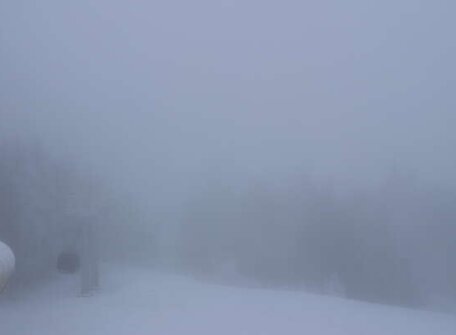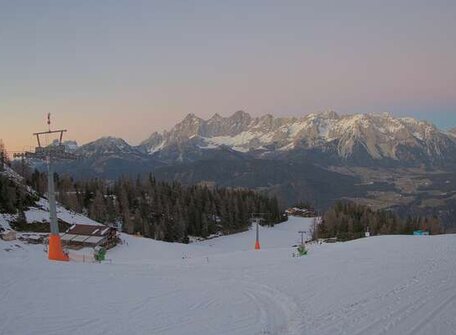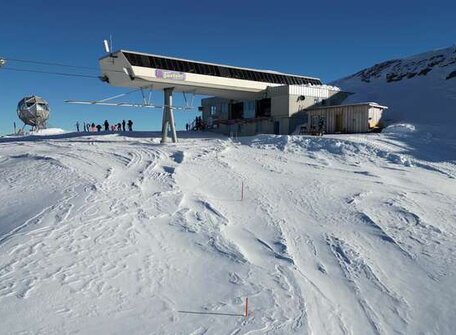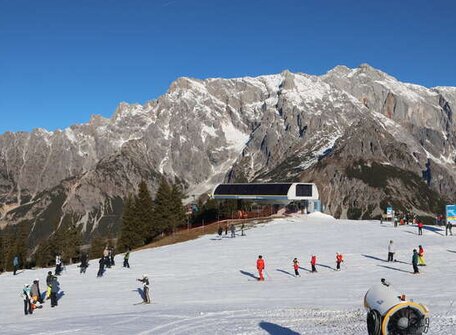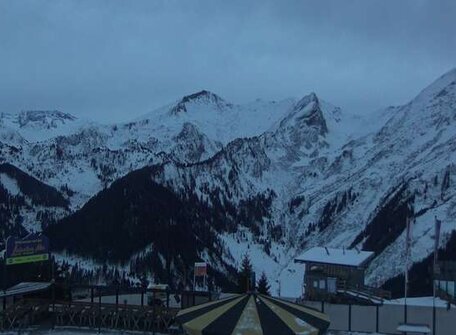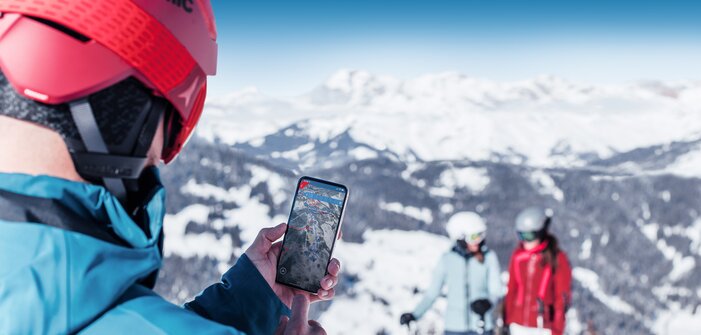Level 2
Avalanche danger is MODERATE. Due to solar radiation, increasing wet-snow activity is expected during the daytime. Beginning on extremely steep slopes (>40°) in southern and eastern aspects, it will then spread to all aspects, releases small-to-medium. also triggerable by 1 person. Below 2600 m where the snow is sufficient, naturally triggered glide-snow avalanches can be expected on steep slopes, particularly where the recent fresh snow fell on bare ground. Avoid zones below glide cracks. Above 3000 m, dry slab avalanches can be triggered in a few places by 1 person, esp. on extremely steep (>40°) shady slopes, releases mostly small.
Solar radiation makes the snowpack wet, it loses its firmness. On steep rocky slopes which have again been snow on and grassy slopes, the snowpack is wet down to the ground and can glide away, possibly sweeping the old snowpack along if it becomes wetter. The recent fresh fallen snow (often lying atop a layer of Sahara dust, the wet loose-snow avalanches glide over this crust) is quickly diminishing due to melting. During the night a melt-freeze crust sometimes forms, but later softens rapidly.
Classic springtime will continue.
Level 2
Avalanche danger is MODERATE. Due to solar radiation and warmth, the snowpack becomes increasingly moist, loses its firmness and naturally triggerd avalanche activity increases during the course of the day, releases sometimes medium. Where snow is sufficient, small glide-snow avalanches can release naturally cases in extremely steep terrain (>40°), especially where the ground was previously bare of snow. Avoid zones below glide cracks.
Solar radiation makes the snowpack wet, it loses its firmness. On steep rocky slopes which have again been snow on and grassy slopes, the snowpack is wet down to the ground and can glide away. The recent fresh fallen snow is quickly diminishing due to melting. During the night a melt-freeze crust can hardly form
Classic springtime will continue, danger potential is receding due to the natural melting process.
Level 2
Avalanche danger is MODERATE. Due to solar radiation, increasing wet-snow activity is expected during the daytime. Beginning on extremely steep slopes (>40°) in southern and eastern aspects, it will then spread to all aspects, releases small-to-medium. also triggerable by 1 person. Below 2600 m where the snow is sufficient, naturally triggered glide-snow avalanches can be expected on steep slopes, particularly where the recent fresh snow fell on bare ground. Avoid zones below glide cracks.
Solar radiation makes the snowpack wet, it loses its firmness. On steep rocky slopes which have again been snow on and grassy slopes, the snowpack is wet down to the ground and can glide away, possibly sweeping the old snowpack along if it becomes wetter. The recent fresh fallen snow (often lying atop a layer of Sahara dust, the wet loose-snow avalanches glide over this crust) is quickly diminishing due to melting. During the night a melt-freeze crust sometimes forms, but later softens rapidly.
Classic springtime will continue.
Level 1
Avalanche danger is low. Due to solar radiation, natural releases (loose dry and loose moist) are to be expected in extremely steep terrain (>40°). Small releases are the rule.
Solar radiation makes the snowpack wet, it loses its firmness. The snow is rapidly disappearing.
Classic springtime will continue, danger potential is receding due to the natural melting process.
Last update 01.05.2024, 08:45
Source: ZAMG
